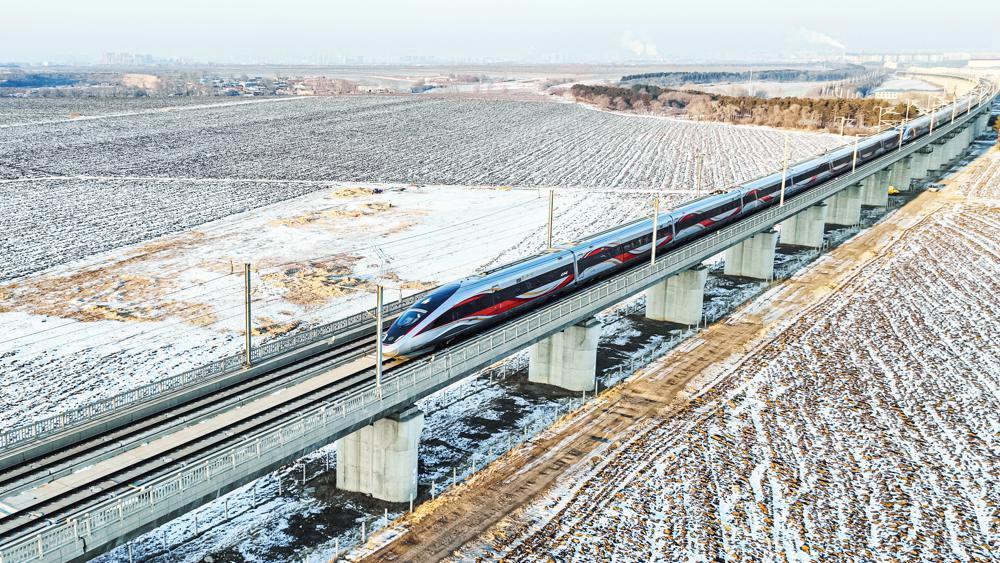Six-percent growth logged last year as expenditure pours into infrastructure
 A Fuxing CR400BF-GZ bullet train runs in Heilongjiang province. (YUAN YONG / FOR CHINA DAILY)
A Fuxing CR400BF-GZ bullet train runs in Heilongjiang province. (YUAN YONG / FOR CHINA DAILY)
China will continue to invest in fixed transportation assets this year to contribute to economic development, the transport minister said on Thursday.
"Last year, China's transportation sector saw investments of 3.8 trillion yuan ($550 billion) in fixed transportation assets, a year-on-year increase of 6 percent, contributing to economic growth. This year, we will continue to invest more in the sector for economic development," Li Xiaopeng, the transport minister, said at a news conference on Thursday.
The investment for transportation infrastructure usually comes with a large amount of expenditures, which can yield quick returns and also drive the development in other sectors, said Xu Chengguang, vice-minister of transport.
"It is an important measure to ensure people's livelihoods and promote economic development. It is also one of the essential areas to stabilize economic growth and create more jobs," Xu said.
Last year, investment in railway fixed assets reached 710 billion yuan, about the same as in 2021.
Spending on highway fixed assets was 2.9 trillion yuan, up 9.7 percent year-on-year. Waterways received 167.9 billion yuan in fixed asset investment, up 10.9 percent year-on-year. Fixed asset investment in civil aviation was 120 billion yuan, about the same as in 2021.
The sector has sped up the construction of major transport infrastructure projects, building more expressways and railways.
Last year, China built about 5,000 kilometers of railway lines, about 2,000 km of which were high-speed railways. About 70,000 km of highways were opened to traffic, with 8,000 km being expressways. The country added and improved about 800 km of high-grade inland waterways and built 92 berths that can accommodate large ships carrying 10,000 metric tons of cargo.
In October, a detailed plan was released for the construction of the transport system's backbone network, with the scale expected to reach 260,000 km by 2025.
A project was also launched to improve the transportation and logistics network to boost the carriage of freight in urban areas, with 15 cities selected as the first group to be built into national cargo transport hubs.
Major transport construction projects — such as the Sichuan-Tibet Railway and Shenzhen-Zhongshan Bridge — proceeded smoothly last year.


